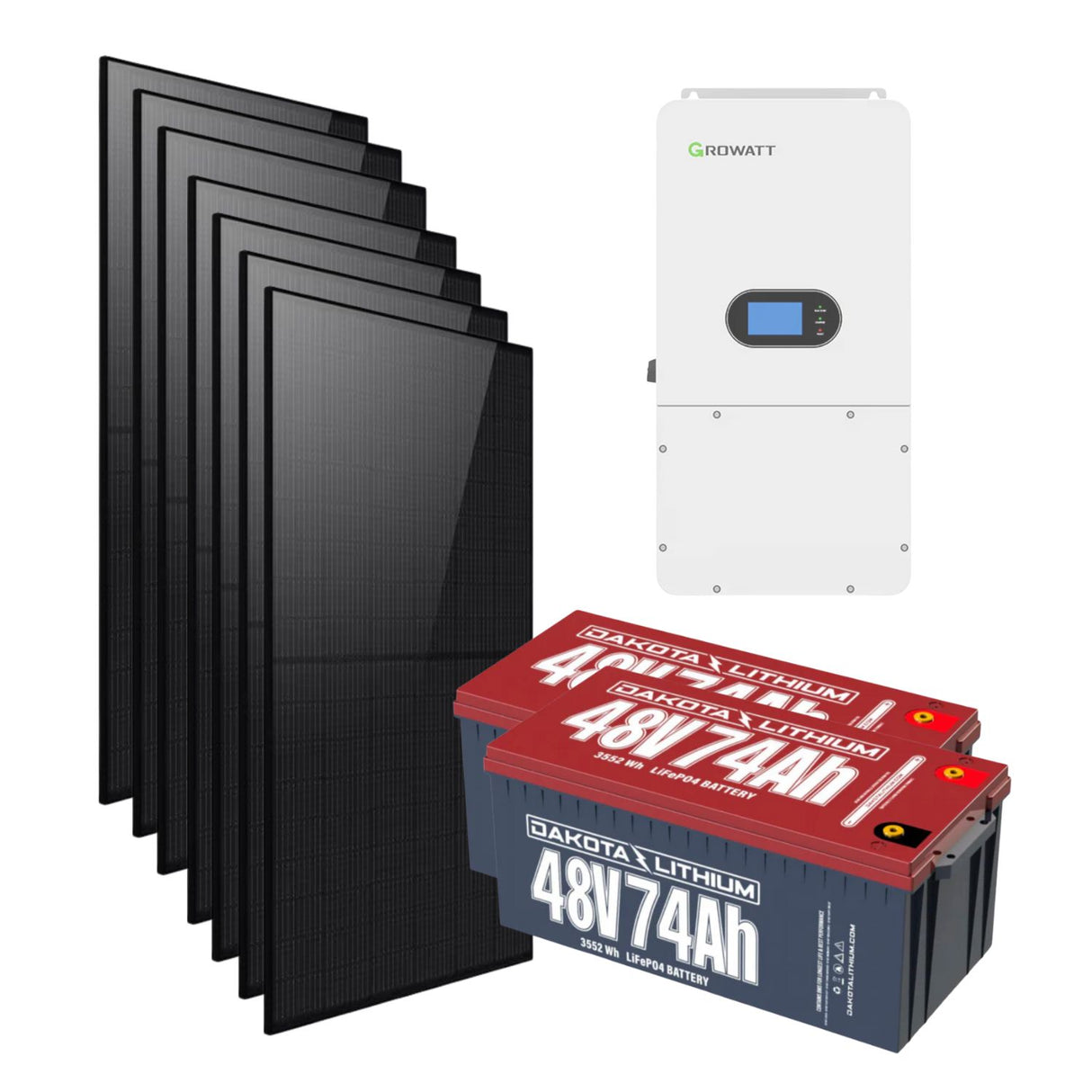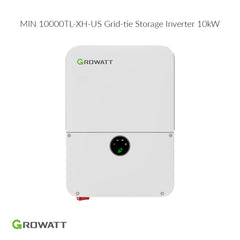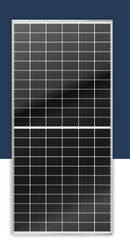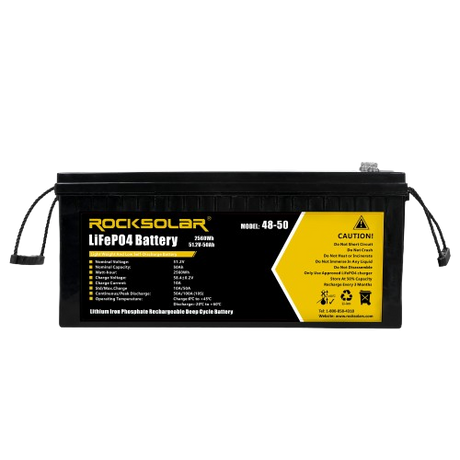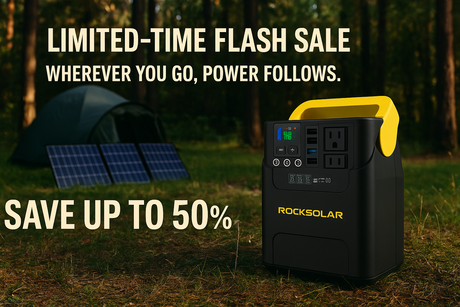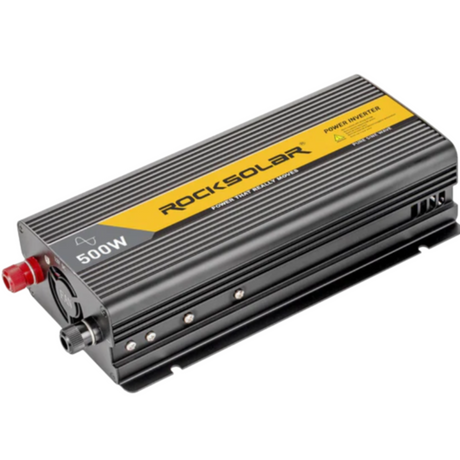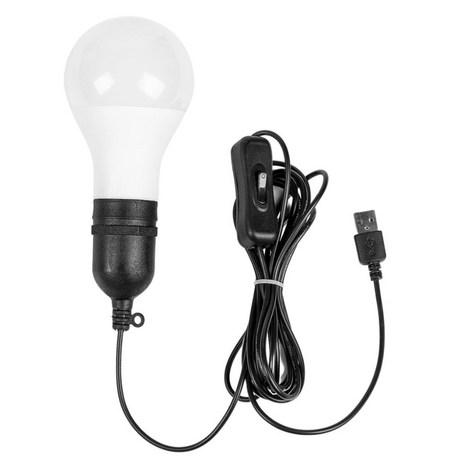Rocksolar 10kW Off-Grid Solar Kit with Hybrid Inverter, 48V Lithium Storage & 12×600W Panels
- Inverter Model: SPH10000TL
- Inverter Power: 10 kW continuous output (pure sine wave)
- Batteries: 2 × 48V 74Ah Lithium (7,104 Wh nominal total)
- Solar Panels: 12 × 600W high-efficiency (7.2 kW total)
- Charge Controller: MPPT(s) sized for ~150 A at 48V
- Runtime Examples: 3,000 W ~1.89 hrs; 1,000 W ~5.68 hrs; 500 W ~11.37 hrs
- Applications: Whole-home backup, farms, workshops, telecom, RV/caravans
- Protection & Controls: DC fuses, breakers, disconnects, grounding per code
- Installation Notes: Site survey, shading/tilt optimization, proper cabling, string sizing
- Maintenance & Warranty: Annual inspections, battery monitoring, firmware updates, varies by component
Rocksolar 10kW Off-Grid Solar Kit with Hybrid Inverter, 48V Lithium Storage & 12×600W Panels is backordered and will ship as soon as it is back in stock.
Couldn't load pickup availability
Talk to Real Experts Anytime
Talk to Real Experts Anytime
Lifetime tech support from our in-house specialists
Hassle Free Warranty
Hassle Free Warranty
Effortless Warranty for Your Ease.
Unbeatable Value, Guaranteed
Unbeatable Value, Guaranteed
Find it cheaper elsewhere? We'll match it.
Description
Description
10 kW Off-Grid Solar System — SPH10000TL Inverter + 2×48V 74Ah Batteries + 12×600W Panels
A high-capacity off-grid solution designed for whole-home backup, larger cabins, small farms, and remote commercial loads. This turnkey configuration pairs a 10 kW SPH10000TL inverter with dual 48V 74Ah lithium batteries and a 7.2 kW (12×600W) solar array to deliver robust daytime production and reliable energy storage.Core Components
- Inverter: SPH10000TL — 10 kW continuous output (pure sine wave; verify surge capability for motor starts).
- Batteries: 2 × 48V 74Ah (each = 48V × 74Ah = 3552 Wh; combined nominal = 7104 Wh).
- Solar Array: 12 × 600W panels = 7200 W (7.2 kW) nominal DC.
- Recommended Charge Controller(s): MPPT(s) sized to handle ~150 A at 48V (see sizing notes).
Typical Applications
- Full off-grid or backup power for larger cabins and rural homes
- Small farms and agricultural pumps (with appropriate motor start handling)
- Workshops, telecom sites, and remote commercial loads requiring multi-kW capacity
- Extended RV or caravan systems when paired with smart charge management
Recommended Supporting Components & Configuration Notes
- MPPT Charge Controller(s): Because the array can produce ~150 A at 48 V, use either a single high-current MPPT (≥160–200 A) or split the array between two or more MPPT inputs to meet voltage/current limits and improve reliability.
- Battery Management System (BMS): Required for cell balancing, safety, and long battery life. Ensure the inverter and BMS communicate properly.
- Surge Capacity: Verify inverter’s surge rating for motor starts (pumps, compressors). Add soft-start devices if needed for heavy inductive loads.
- Protection & Controls: DC fuses, breakers, disconnects, and proper grounding per local code (NEC/CEC or local authority).
- Cabling: Use appropriately gauged battery and PV cabling to limit voltage drop; consider a PV combiner for array organization.
- Array Layout: Design string length (series/parallel arrangement) to keep Voc and Vmp within MPPT/inverter limits across temperature ranges.
Installation & Best Practices
- Perform a site survey for shading, tilt, and optimal azimuth to maximize production.
- Plan for expansion: extra inverter capacity, additional batteries, or more panels if future loads increase.
- Mount panels with corrosion-resistant hardware and proper tilt for your latitude.
- Commission the system with BMS/inverter/MPPT firmware configured for 48V battery chemistry and safety limits.
- Follow local electrical code and obtain required permits and inspections.
Maintenance & Warranty Guidance
- Inspect panels, mounts, and wiring annually; clean panels when needed.
- Monitor battery health using BMS logs and maintain recommended temperature/storage conditions.
- Keep inverter and MPPT firmware current where supported.
- Confirm manufacturer warranties for panels, inverter, and batteries (typical ranges: panels 10–25 years, inverters 5–10 years, batteries vary by chemistry and supplier).
Why Choose This Configuration?
This 10 kW system strikes a strong balance between high instantaneous power (10 kW inverter), durable battery backup (≈7.1 kWh nominal), and substantial solar input (7.2 kW), making it an excellent choice for users who require reliable multi-kilowatt performance off grid. With proper sizing of MPPT and careful installation, the kit supports whole-home loads, farm equipment, and longer autonomy with modest battery expansion.Need a site-specific design or a quote? Contact our technical team to tailor battery capacity, inverter configuration, and panel layout to your exact load profile and location.
SPECIFICATIONS
SPECIFICATIONS
Specification
| Inverter Model | SPH10000TL |
| Inverter Power | 10 kW Continuous Output (Pure Sine Wave) |
| Batteries | 2 × 48V 74Ah Lithium (7,104 Wh Nominal Total) |
| Solar Panels | 12 × 600W High-Efficiency (7.2 kW Total) |
| Charge Controller | MPPT(s) sized for ~150 A at 48V |
| Runtime Examples |
3,000 W → ~1.89 hrs 1,000 W → ~5.68 hrs 500 W → ~11.37 hrs |
| Applications | Whole-home backup, farms, workshops, telecom, RV/caravans |
| Protection & Controls | DC fuses, breakers, disconnects, grounding per local code |
| Installation Notes | Site survey for shading/tilt, expandability planned, proper cabling & string sizing |
| Maintenance & Warranty | Annual panel and wiring inspection, battery health monitoring, firmware updates, warranty varies by component |
INCLUDES
INCLUDES
PDF DOWNLOADS
PDF DOWNLOADS
Payment & Security
Payment methods
Your payment information is processed securely. We do not store credit card details nor have access to your credit card information.
